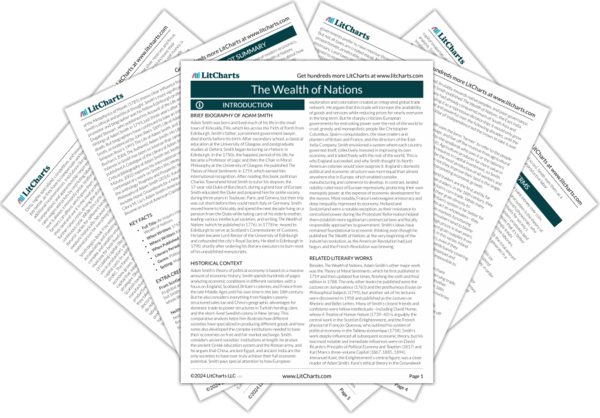Rent Quotes in The Wealth of Nations
As the price or exchangeable value of every particular commodity, taken separately, resolves itself into some one or other, or all of those three parts [wages, profits, and rent]; so that of all the commodities which compose the whole annual produce of the labour of every country, taken complexly, must resolve itself into the same three parts, and be parcelled out among different inhabitants of the country, either as the wages of their labour, the profits of their stock, or the rent of their land. The whole of what is annually either collected or produced by the labour of every society, or, what comes to the same thing, the whole price of it, is in this manner originally distributed among some of its different members. Wages, profit, and rent, are the three original sources of all revenue, as well as of all exchangeable value. All other revenue is ultimately derived from some one or other of these.
Rent, it is to be observed, therefore, enters into the composition of the price of commodities in a different way from wages and profit. High or low wages and profit are the causes of high or low price; high or low rent is the effect of it. It is because high or low wages and profit must be paid, in order to bring a particular commodity to market, that its price is high or low. But it is because its price is high or low, a great deal more, or very little more, or no more, than what is sufficient to pay those wages and profit, that it affords a high rent, or a low rent, or no rent at all.
No equal capital puts into motion a greater quantity of productive labour than that of the farmer. Not only his labouring servants, but his labouring cattle, are productive labourers. In agriculture, too, Nature labours along with man; and though her labour costs no expense, its produce has its value, as well as that of the most expensive workmen. [...] The labourers and labouring cattle, therefore, employed in agriculture, not only occasion, like the workmen in manufactures, the reproduction of a value equal to their own consumption, or to the capital which employs them, together with its owner’s profits, but of a much greater value. Over and above the capital of the farmer, and all its profits, they regularly occasion the reproduction of the rent of the landlord. This rent may be considered as the produce of those powers of Nature, the use of which the landlord lends to the farmer.
Ground-rents, so far as they exceed the ordinary rent of land, are altogether owing to the good government of the sovereign, which, by protecting the industry either of the whole people or of the inhabitants of some particular place, enables them to pay so much more than its real value for the ground which they build their houses upon; or to make to its owner so much more than compensation for the loss which he might sustain by this use of it. Nothing can be more reasonable, than that a fund, which owes its existence to the good government of the state, should be taxed peculiarly, or should contribute something more than the greater part of other funds, towards the support of that government.












